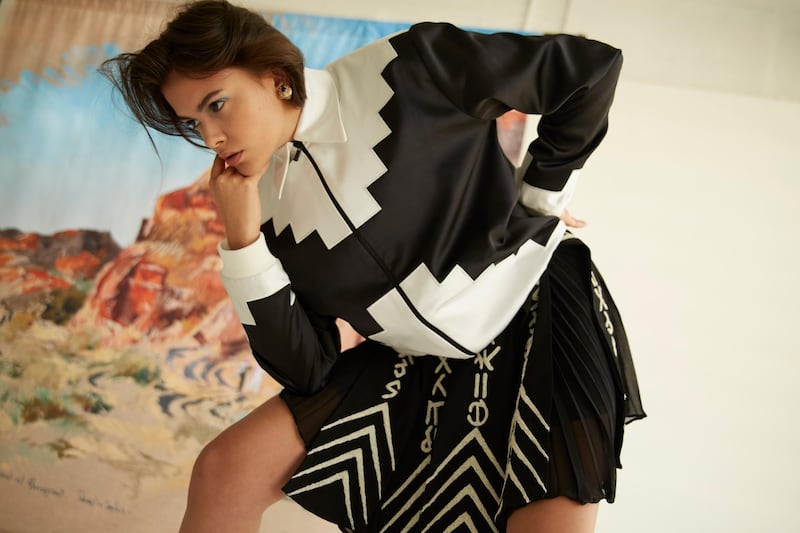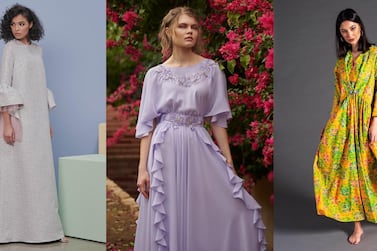There are only 22 pieces in the new Hindamme collection, yet designer Mohammed Khoja has managed to squeeze upscale street style, fringing (one of the hottest trends right now), evening wear and even unisex velvet bomber jackets into the line.
Not a bad effort for a label only on its fourth collection.
For this latest line, Khoja took his inspiration from Al Ula in his native Saudi Arabia. The site was built by the Nabataean civilisation, who also created Petra.
"I am quite inspired by my surroundings and my environment," says Khoja. "I think Al Ula is such an interesting piece of history, which in large part has been quite forgotten. As a Saudi I am rediscovering this incredible civilisation."
Hindamme is a complex label. At first glance, it offers simple, often unisex T-shirts, shirts and jackets. Yet look closer, and behind each piece is intricate symbolism and a reference to regional history.
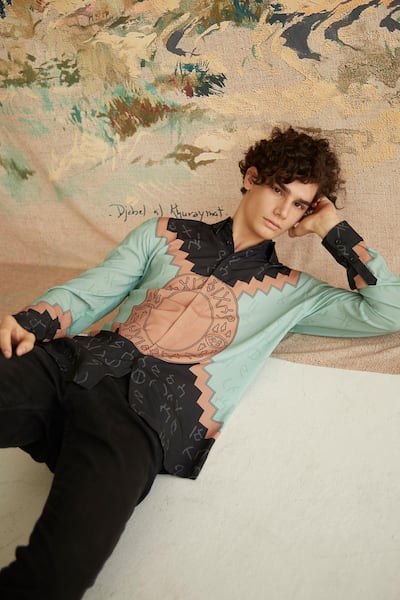
“I try to create collections that are able to resonate because I view fashion not just as retail, but as an extension of culture, and I love the idea of being able to wear something that elaborates further on culture and has a message.
"Some references are very literal, some are very obscure, and this was a deliberate choice. Take this spring/summer collection, for instance. I have never seen Al Ula represented in print before, and I tried to mix things up by taking elements inspired by it [that were] a bit more obscure, not too literal.” The hand-beading, for example, is a reference to the great wealth that the Nabataeans had.
He says: “I wanted to integrate old-world craftsmanship into contemporary ready-to-wear and street wear, so I found a textile expert who works on palaces, restoring couches and furniture. I had the idea to use the slanting Gobelin embroidery that normally you see in cushions and integrate that into the jackets.”
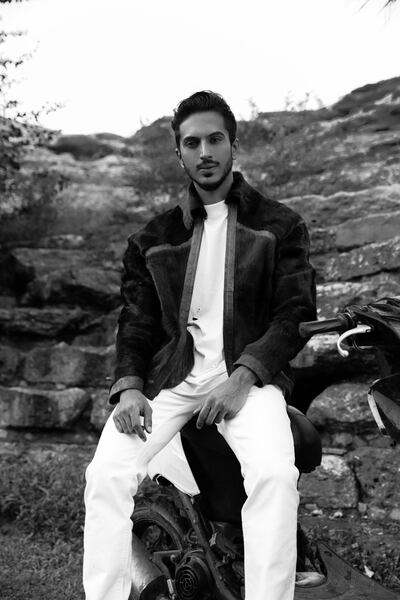
The result is dense tapestry weaving around necklines, while elsewhere linear markings run down sleeves and across torsos.
“Those marks are taken from the text of the Nabataean language. I did not translate them – I was hoping to, but when I spoke to a professor, she said it was very difficult to get an exact translation, and advised me to leave it as it is. So I kept it as it was written down on the walls. It is quite beautiful.”
Of course, one question about Hindamme is about the company name and what it means. Khoja says using his own name was never an option, and instead, true to form, he looked to the past for inspiration.
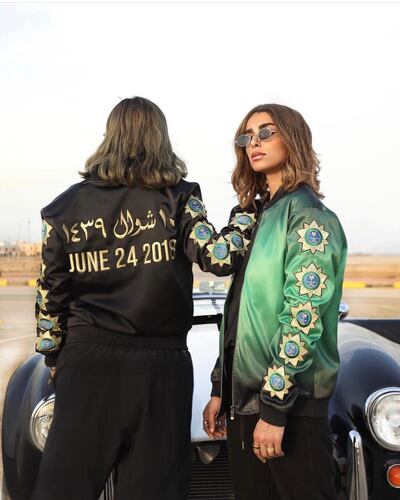
“I wanted a name to reflect the philosophy of both East and West, and I found an Arabic word that is really no longer used. In fact it is so obscure, many Arabs would not even know what it means, which I like. Hindamme means to possess, like in harmony and aesthetic.
"An older generation of Arabs would have used it to describe someone who was well dressed and took care of their appearance. I thought it was a fitting name. Also, it is easily pronounced by a non-Arabic tongue.”
This ability to lightly layer multiple meanings seems to come so easily to this young designer, perhaps without him realising the wider significance. Case in point, in 2018 he created a range of gleaming black and green bomber jackets to celebrate the lifting of the ban on driving for Saudi women. The historic date of June 24, 2018 was emblazoned across the back in large gold embroidery. The range sold out almost instantly and London’s Victoria & Albert Museum bought one for its permanent collection.
“I feel I am able to start bringing elements of my culture in a way that the West can appreciate it, that is relatable. The way I communicated the lifting of the [driving] ban was as a positive outcome for everyone in the world, not just for Saudi.
“I am still trying to find my place as a designer. I am following my own inspiration and I encourage others to give their own interpretation, not what you think is popular and trendy. Be authentic, because that is what makes you interesting.”
